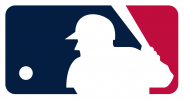Pace of play has been a discussion for Major League Baseball for many years and new commissioner Rob Manfred helped enact new rules in hopes of speeding up the game. A commercial break and pitching change clock and staying in the batter's box are part of the new rules. Baseball may have missed the boat on their new rules and also seem unlikely to enforce them in full.
A new column by Jayson Stark published on Wednesday states that fines could be up to $500, which may not be enough to deter some slow behavior. David Ortiz stated he might run out of money. Infractions will be written down so that there is no scene during the game. That could create drama and overreaction after the fact.
Stark also reports that lengthy batter routines can continue as long as one foot remains in the box. Also, it is understood that managers may have to leave the bench to make a challenge call, and they will not be rushed into a decision. They can still consult video officials as long as they signal the umpire. Umpires are expected to approach the dugout in this case.
It was already made known that the first month of the season will be a trial period. With such loose rules already structured around the one foot rule, and the lack of enforcement it looks like there may not be significant changes to the length of a game. Aside from actually enforcing the rules, there are other effective ways to speed up the game.
Call the High Strike
The rulebook says that the upper limit of the strike zone is the "midpoint between the top of the shoulders and the top of the uniform pants." Meanwhile, the lower part of the zone has been the friendliest to pitchers as the number of called strikes in the lower-third of the zone reached an all-time high in 2014.
Batters have to protect the bottom of the zone but can hold off on many pitches that come in above the belt. Obviously the game does not want to give all the advantage to the pitcher, but it can abide by the rules. If a batter is more understanding of the true strike zone based on how it is called, then more pitches will be swung at, thus put in play.
Do Not Give Preferential Treatment to National Broadcasts
This one is much easier said than done because television money carries a lot of weight. There is a 20 second difference for local broadcasts and nationally-televised broadcasts for inning breaks and pitching changes. Keep it the same. It creates a routine and baseball players love a routine.
The time difference also favors certain clubs like the Red Sox and Yankees, which already have some of the longest games in all of baseball. The ESPN Sunday Night Baseball broadcast is always one of the longest of the week and even feels long for a diehard baseball fan. The time difference may be small, but it could add up in a close game with multiple pitching changes.
There are other ways to present the game to speed up the play on the field as well, which includes what a fan can learn from tuning in.
Educate the Fan
Do you think more casual fans would be interested in the game if they knew why certain things happen between innings? If the pace of play rules are being changed based off a perception of attention span in today's society, maybe it would be beneficial to explain the game better.
Instead of showing random fans chomping on a soft pretzel when a broadcast comes back from commercial, talk about why the grounds crew just raked the infield. Discuss the parameters of the field and how the weather may influence the game that day. Find something that is of note and mix it in with the more tangential topics. Create an investment. The game should be the star. This would then translate to those attending games live and hopefully continue to grow that investment in the product on the field.
It will be interesting to see what happens with the pace of play this year. If the rules are enforced they may be enough to speed up the game. However, the league could stand a few more tweaks to keep the game moving.










































